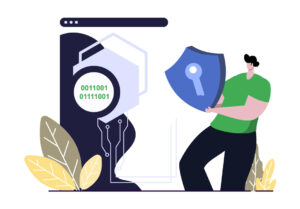What is a security token offering (STO)?
The introduction of Bitcoin in 2009 popularised blockchain technology. Even though cryptocurrencies and other blockchain-related financing have earned a reputation for being volatile and speculative, there is widespread agreement regarding the financial benefit of blockchain technology and other forms of distributed ledger technology.
JP Morgan, Square, and Facebook are among the banking and technology institutions that have already managed to enter the blockchain space. Throughout the coming years, we will see more and more names associated with blockchain as it plays an increasing role in payment systems, including CBDCs and stablecoins, and in facilitating liquidity via asset tokenisation.
The term ‘tokens’ immediately conjures up thoughts of initial coin offerings (ICOs), a method of raising capital for crypto projects that gained popularity in 2017.
Key takeaways:
- STOs are much like ICOs but in a regulated economy.
- A security token is a token that represents a stake in an external asset or organisation issued on a blockchain that is either permissioned or permissionless.
- Security tokens are transparent, resolve instant settlement, available and devisable.
- The three main types of security tokens are equity, debt, and asset-backed tokens.
What is an initial coin offering (ICO)?
Initial coin offerings, or ICOs, are conceptually similar to an IPO because both allow startups and entrepreneurs to raise capital. In contrast to an IPO, where securities are issued in exchange for investment, investors in an ICO receive coins or tokens.
The ICO procedure is straightforward, but the absence of regulation in the United States and overseas has led to fake crowd sales, unlawful airdrops, and blatant scams. The 2017 ICO craze temporarily harmed the credibility of blockchain and tokens.
However, blockchain’s utility as a disruptive technology remained strong during these challenging times. The distributed ledger and blockchain industry maintained a low profile, searching for a superior combination of technology advantages that would add new techniques and value to legacy security products. These innovative tokens became a “security token” due to the convergence of these two.
What is a security token?
Tokens representing stakes in external assets or organisations are security tokens issued on a permissioned or permissionless blockchain. Security tokens, which perform the same purpose as stocks, bonds, and other equities, can be issued by entities such as governments and enterprises.
What are the use cases of security tokens?
A corporation that wants to issue shares to investors can utilise a security token that provides the same benefits as traditional securities, like shares, voting rights, and dividends. Because blockchain technology underpins security tokens, the benefits are enormous.
Transparency
Blockchain networks provide full auditability of all information, including participants’ identities. Everyone has access to the ledger, which allows them to keep track of their holdings and the issue of specific fungible and non-fungible tokens.
Instant Settlement
Clearance and settlements are a top priority for investors wishing to transfer assets. While deals are usually completed swiftly, reconfiguring ownership can take many days. The process is automatic and speedy on a public ledger.
Availability
Existing financial marketplaces operate on their timetables — usually just during business hours, as human labour is necessary, and only for a limited time. By contrast, a blockchain-based market is always active, regardless of the time of day.
Divisibility
Asset tokenisation creates many investment opportunities for everyone, from Wall Street-backed hedge funds to ordinary investors trading on Robinhood. For example, a $10 million Picasso painting could be tokenised into 10,000 pieces, each worth $1,000. Tokenisation will democratise asset access while improving accessibility and granularity.
What is a Security Token Offering?
To properly comprehend STOs and why we need them, we should first grasp why ICOs were perceived as a blemish on the overall image of the blockchain sector.
From 2016 to 2018, ICOs were in high demand, and investors were eager to engage in this new type of funding. ICOs raised about $6.3 billion in fiat money in the first quarter of 2018. These investments were expected to grow in value over time. The bubble, however, exploded in Q4 of 2018, when the “market cap” of all cryptos collapsed by more than $750 billion. There was still hesitancy among the Securities and Exchange Commission (SEC) to develop regulations governing token offerings.
Soon after, regulatory authorities started making announcements about compliance. The most significant came from SEC Chairman Jay Clayton, who declared all ICOs to be securities; Swiss FINMA likewise released guidelines classifying tokens as securities under existing legislation. Many blockchain innovators objected to these and other ICO announcements, claiming that their companies offered utility tokens rather than securities. The regulatory uncertainty surrounding ICOs has driven businesses and investors away from the market.
Regulators today require token offerings to comply with existing securities laws and rules; hence, the Security Token Offering was established. STOs are similar to ICOs but must comply with securities laws in the country where the token is being offered for investment. STOs establish additional legal duties for issuing equity in the company since they are compatible with applicable laws and norms.
Types of security tokens
Equity Tokens
Besides how ownership is documented and transferred, an equity token is comparable to traditional stock. It has been customary to track share ownership via a database, with certificates printed and validated on paper. Rather than a single ledger, an equity token is maintained by hundreds, thousands, or tens of thousands of computers worldwide. Holders of equity tokens are entitled to a portion of the firm’s profits and can vote. Equity tokens assist a company’s decision-making, financial outlook, and regulatory frameworks in three ways:
- Investors can vote while complying with securities laws.
- Startups now have access to new, perhaps more democratised funding models.
- Regulators now have a new and more transparent framework for analysing project financing.
Debt Tokens
A debt token is a short-term loan with an interest rate granted to a corporation by investors — it could be real estate mortgages, corporate bonds, or another kind of structured debt. Since a mortgage loan with a medium risk of default cannot be priced the same as a bond for a pre-IPO company, a debt token’s price is determined by its risk and dividend. A smart contract, which symbolises debt security, exists on the blockchain network. Repayment conditions are specified in the contract, determining the dividend model and risk elements of the underlying debt.
Asset-backed Tokens
Tokens indicate ownership of assets like real estate, art, carbon credits, or commodities. Because blockchain is safe, irreversible, and transparent, it allows for a reliable record of transactions; it lowers fraud and improves settlement time, making it a perfect fit for commodities trading. Asset-backed tokens are digital assets that have properties similar to commodities such as gold, silver, and oil, which provide value to these tradable tokens.
STOs and STO platforms: their growth and future development
The value of blockchain is derived from its permanence, security, and transparency — each of which is critical to confidence, trust, safety, market efficiency, and soundness. It is already being implemented into the new standard for public security products since the advantages are numerous, and, more importantly, the infrastructure is in place. The security token market cap increased by 500% in 2020, reaching $449 million. Security token infrastructure firms raised more than $30 million in funding in January 2021 alone. In another analysis, Plutoneo forecasts an 85 per cent CAGR in the European Union tokenised market from 2018 to 2024.
Security tokens go beyond liquidity and revenue distribution frameworks. The use of security tokens opens up a variety of investment opportunities. In a secondary market, small investors may be able to sell off part of their interest or the dividend portion of their equity. By contrast, brokers may bundle up and sell voting security tokens seamlessly. A decentralised autonomous organisation (DAO) could include human shareholders who code voting preferences into smart contracts. There is no limit to the possibilities.
Although the idea of an STO has been around for a while, the technology behind security tokens is still in its early stages. Despite this, security tokens are here to stay, and more are expected to be launched soon. STOs are indeed one of the markets to watch in the coming years as blockchain technology seeks to revolutionise the financial sector.
Related Articles
Contact us
Good to have you here! If you have any queries, please leave your message. Our team will reach out soon:)
.







